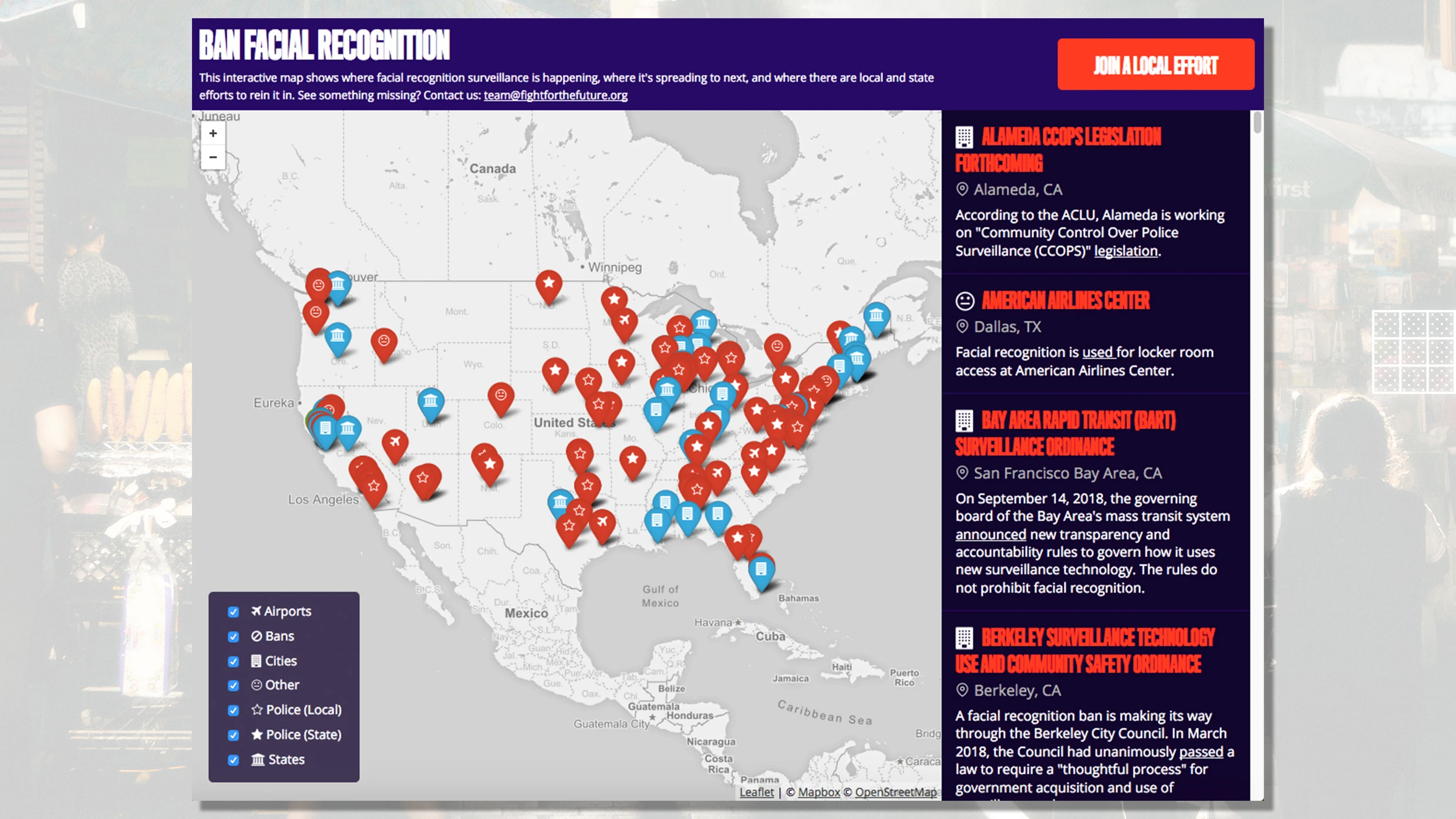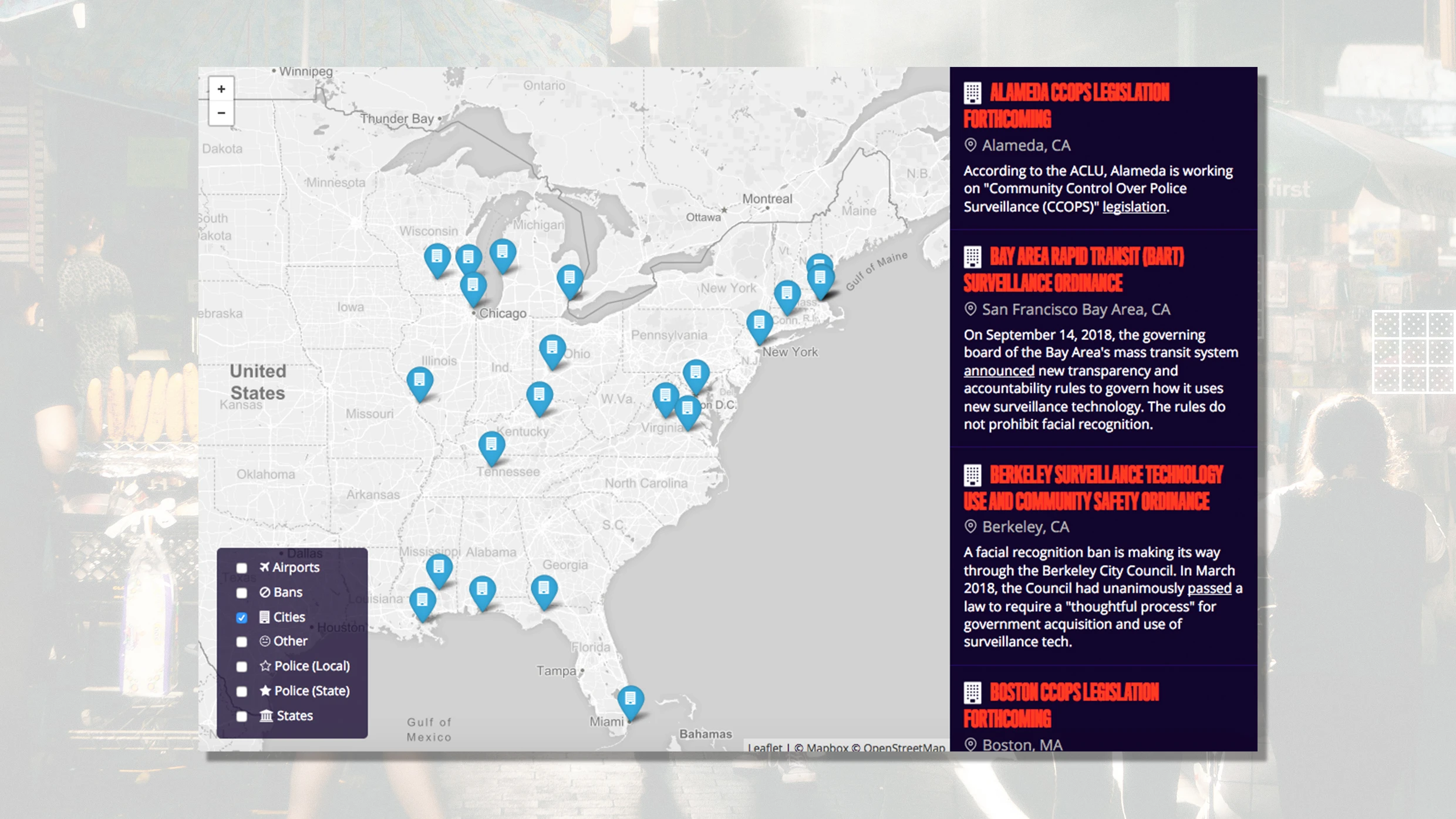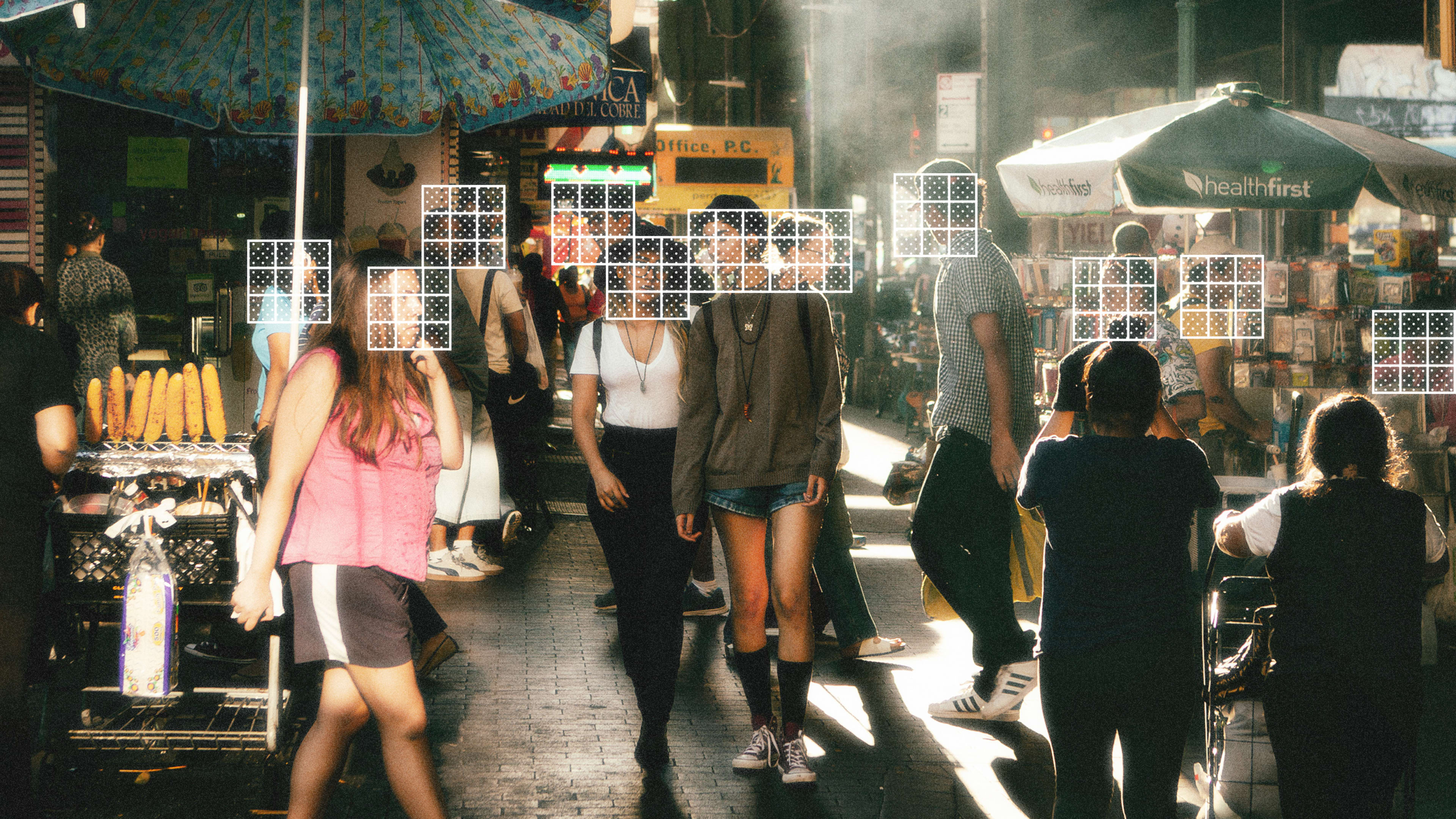Earlier this month, Oakland, California, became the third city in the United States to ban the use of facial recognition technology by any city agencies, including police, behind San Francisco and Somerville, Massachusetts.
But these cities are in the minority. A new map produced by the digital rights nonprofit Fight for the Future illustrates just how pervasive facial recognition technology is across the country: an overwhelming number of red stars on the map indicate where local and state police are using facial recognition, including in Detroit, Michigan; Lincoln, Nebraska; and Albuquerque, New Mexico. You can toggle on and off to see the map pins for each of the groups using the technology, which include police departments (both city and state), as well as airports that use facial recognition and cities that are starting to mobilize against the technology.

Facial recognition has become one of the most hotly debated technologies today because of how inaccurate it is, particularly among brown and black people—the ones who are often the target of police surveillance. However, tech companies like Amazon continue selling it to the government, prompting a backlash and a movement in local politics to create oversight and transparency for how the government is using facial recognition. Some want to ban it altogether: Advocacy groups like Fight for the Future believe that facial recognition should be banned in part because it is biased, easily hacked, and simply not accurate enough to be deployed at scale—one report from The Independent found that 98% of facial recognition results were inaccurate. Because police departments frequently use facial recognition without a warrant, Fight for the Future argues that its use violates people’s civil liberties.
In addition to creating a petition that will automatically send a message to your lawmakers about banning facial recognition, Fight for the Future produced the map to harness people’s concerns about the technology—and encourage them to advocate locally. All of the map’s data points are linked to information collected by the Georgetown Law Center on Privacy and Technology, as well as public information that the nonprofit carefully compiled into a single visualization. While it’s nearly impossible to discern whether the list is truly comprehensive because police departments are not required to disclose if they’re using facial recognition, Fight for the Future claims that the map is the most comprehensive look at the governmental use of and legislation against facial recognition currently available.
“So much of this surveillance is happening in secret and only gets exposed by a FOIA requests or intrepid local activists demanding answers,” Evan Greer, deputy director at Fight for the Future, tells Fast Company via email. “Already since launching we’ve received many tips about additional places where facial recognition is being used or where there are Amazon Ring partnerships with police. This is definitely something we will need to continue updating as we learn more about where this dangerous and invasive technology is spreading.”

The map is part of Fight for the Future’s campaign to petition local municipalities to pass a ban against using facial recognition. You can sign up through the campaign’s website to receive access to a Google Doc that outlines how you can contribute to the movement, including signing the nonprofit’s petition, reaching out to local politicians, and educating friends and family. The document also includes directions for finding local groups to contact that may already being advocating for a ban.
There’s some cause for hope: Even though there are a significant number of police departments already using the technology, the map also shows that some cities are working on legislation to curb the rampant, unregulated use of facial recognition. For instance, both Alameda, California, and Brookline, Massachusetts, are drafting legislation to create community control over police using the technology. In New Orleans, mayor Mitch Landrieu decided not to renew a contract for surveillance tech with the data-mining company Palantir in 2018, and in 2017, Nashville passed an ordinance to limit the “unchecked use of surveillance technologies that violate basic privacy rights and feed into a broader national surveillance state.”
People can use Fight for the Future’s map to look up what’s going on in their state and their city, which the organization hopes will encourage them to speak up in their local government and work with advocacy groups on the ground to pass a complete ban against facial recognition.
“People are anxious about facial recognition and its potential impact on our neighborhoods. The goal of this map is to allow people to turn that anxiety into action,” Greer says. “We want people to be able to easily find out if this type of surveillance is happening in their area and then get involved in local and state efforts to stop it.”
Check out Fight for the Future’s map here.
Recognize your brand’s excellence by applying to this year’s Brands That Matter Awards before the early-rate deadline, May 3.
